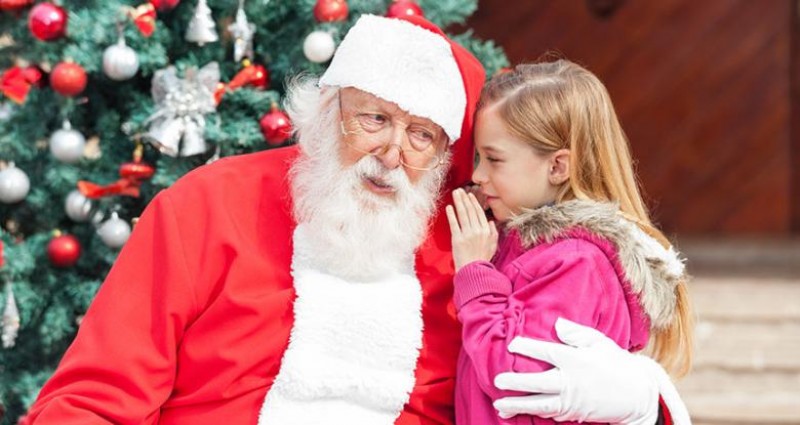
Over the past week, my little girls have seen Santa in real life at least three times (though only one encounter was close enough to whisper “yo-yo” in his ear). You’d think that this Santa saturation might make them doubt that each one was the real deal. For one thing, they looked quite different. Brewery Santa’s beard was a joke, while Christmas-tree-lighting Santa’s beard was legit. Add to that variations in outfits and jolliness levels.
But as I delved into the Santa-related research, I found I was wrong to think his omnipresence might throw my kids off. It turns out that the more kids see real, live Santa Clauses, the more likely they are to think he’s real. More exposure actually tracked with stronger belief, scientists reported in Cognitive Development in 2016.
That got me wondering about this belief. Like many parents, I feel a little hint of unease when it comes to telling my trusting, innocent children a lie. But lots of parents conspire to tell this lie to their children. An AP survey from 2011 (the most recent I could find on this pressing issue) revealed that 84 percent of adult respondents believed in Santa as a child.
Many of these former children had their Christmas beliefs shattered around age 8, other studies suggest. A fascinating paper from 1978 found that 85 percent of 4-year-olds believed in Santa. Five percent didn’t, and 10 percent were still thinking about it. But only 25 percent of 8-year-olds believed in Santa, with 20 percent not believing and 55 percent transitioning in their beliefs. Funnily enough, 60 percent of these same 8-year-olds still believed in the tooth fairy.
This shift in belief from age 4 to 8 has some psychology behind it. The influential child psychologist Jean Piaget proposed that around age 8 children enter the “concrete operational stage” of thinking — a critical, observant phase of questioning impossible things. (To be clear, it is impossible for Santa to fly around the world and deliver toys to all the houses, even with the 48 hours he’d have thanks to the Earth’s time zones, and other time-warping assists. Physicists have looked into it.)
Eight-year-olds’ discerning mindset was detected in a study that prodded children to list not toys, but questions for Santa. Young children tended to ask clarifying sorts of questions, such as “Is the North Pole cold?” “What are your elves’ names?” and “What do your reindeer do during the summer?” Those questions get at minor details without coming close to the central mysteries at the heart of a magical Santa. Older kids, however, were more likely to ask the toughies: “How do you fit inside a chimney?” and “How can you see everyone in the whole wide world?”
Once these questions start coming from your kid, the end may be in sight. But take heart, from yet another scientific study of Santa. Children are a sturdy bunch, and do pretty well after they find out the truth, interviews showed. In fact, it’s probably a relief when the entire world stops gaslighting kids and they finally get their hunches confirmed. The bad news is that the parents didn’t fare so well, describing themselves as predominantly sad after their children learned the truth.
For parents, their children’s discovery is an end of an era, a loss of a ritual tied up in family, tradition and treats. But sadder to me, I think, is that when that reckoning comes to my little girls, it will be a vivid reminder that my time with my small children is scant. These moments of magical thinking fly by faster than Santa would need to travel to complete his furious dash around the world.
Source: Laura Sanders